If you’re looking for ideas for a day trip from Bologna, here is the itinerary for you!
It’s a daily journey suitable for the whole family, but above all for lovers of medieval history and architecture, and for those who love little-known destinations, which will take you between ancient abbeys and scenic fortresses in the provinces of Bologna and Modena.
Abbey of Monteveglio
The Abbey of Santa Maria Assunta in Monteveglio is a monastic complex built between the 11th and 12th centuries; it was built at the behest of Matilde di Canossa, supposedly as a thanksgiving to Virgin Mary for the victory over the emperor Henry IV.
It’s one of the oldest Romanesque-style abbeys in the Bolognese diocese. It stands on top of a panoramic hill overlooking the Samoggia Valley, inside the Monteveglio Abbey Regional Park, and it’s surrounded by a splendidly preserved ancient medieval village.
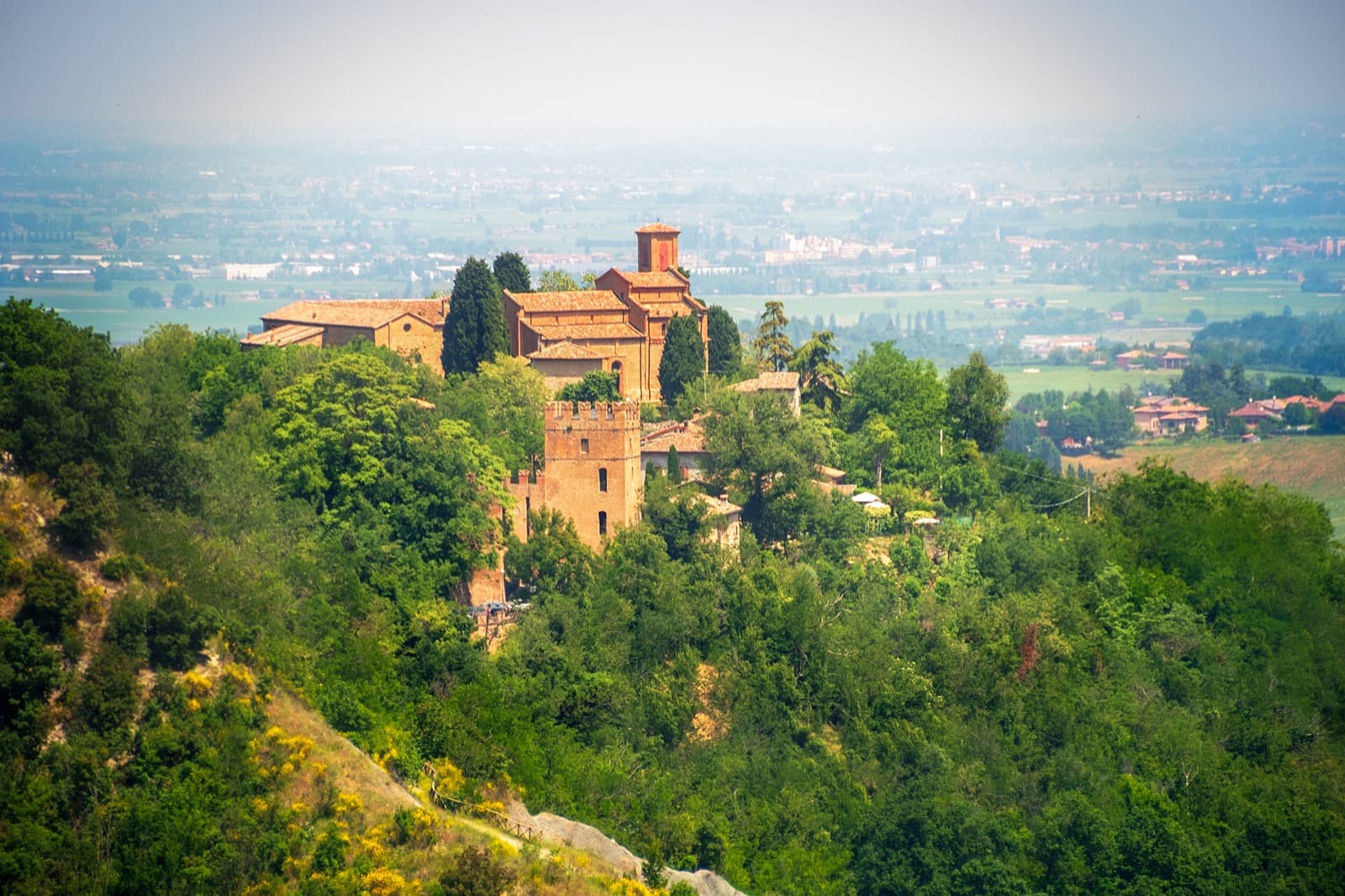
Monteveglio Abbey (Bologna) | Ph. Luca Lorenzelli, via shutterstock
Monteveglio Abbey (Bologna) | Ph. Francesco De Marco, via shutterstock
Monteveglio Abbey (Bologna) | Ph. Luca Lorenzelli, via shutterstock
The church was built on an older building – some parts of which can still be seen today in the crypt and in the apses – adjacent and connected to the monastic building, which was initially assigned to the Canons of San Frediano di Lucca, ancient monastic congregation of Augustinian rule born around 556.
In 1455 the Canons of San Frediano were replaced by the Lateran Canons of San Giovanni in Monte di Bologna, who remained there until 1796, when they were removed due to the Napoleonic invasion.
It’s currently the headquarters of the Community of the Brothers of St. Francis, which you can contact for guided tours.
How to visit Monteveglio Abbey
The medieval village is always open to the public.
The church is open every day from 6.30 to 12.00 and from 3pm to 7.30pm, while the internal cloister can only be visited on Sundays and public holidays from 3pm to 5pm.
To visit the abbey, however, it is necessary to contact the Brothers of San Francesco by writing to fratimonteveglio@gmail.com or by calling +39 051 6707931.
How to reach Monteveglio Abbey
Once in Monteveglio, take Via Abbazia, a steep uphill road that leads right in front of the entrance to the village; here it is necessary to leave the car in the parking lot and continue on foot.
Go through the ancient arched door and continue straight along the road that crosses the village until you reach the monastic complex.
DISCOVER MORE ABOUT THE ABBEY AND THE VILLAGE OF MONTEVEGLIO
Fortress of Bazzano (Valsamoggia)
The Rocca dei Bentivoglio of Bazzano dominates the town from the top of a small hill, a few steps from the historic centre.
The current fortress was built between 1296 and 1317 on a previous castle (probably prior to the year 1000 and then belonged to Bonifacio di Canossa, Matilde’s father) at the behest of Azzo VIII d’Este and later, starting from 1473, transformed into an elegant “delight” destined for holidays in the countryside by Giovanni II Bentivoglio.
Although not officially mentioned among the Matildic castles, the fortress of Bazzano is linked to Matilde di Canossa by a legend that has survived in popular traditions up to the present day; according to legend, the castle of Bazzano would be connected to the castle of Monteveglio via an underground tunnel, inside which the golden armor of the Countess and some treasure chests would still be hidden.
Another curiosity linked to the Rocca is that Ugo Foscolo, at the time lieutenant of the Bolognese national guard, was imprisoned in its prisons in June 1799.
The castle is characterized by a keep on the entrance door of the walls, the current Clock Tower, and by dovetailed merlons that run along the walls. Inside some rooms still retain interesting wall paintings, recently restored.
Rocca dei Bentivoglio, Bazzano, Valsamoggia (BO) Ph. guidopiano via shutterstock
Rocca dei Bentivoglio, Bazzano, Valsamoggia (BO) Ph. @dronemilia_aerialphotos via Instagram
Rocca dei Bentivoglio, Bazzano, Valsamoggia (BO) Ph. @dronemilia_aerialphotos via Instagram
Today the Rocca houses the Arsenio Crespellani Civic Archaeological Museum, which exhibits the archaeological finds of the area from the Paleolithic to the Renaissance, as well as rooms for educational activities, the inter-municipal media library, and rooms intended for cultural events.
How to visit the Fortress of Bazzano
The Rocca and the Archaeological Museum, accessible with a cumulative ticket (€4), are open from Tuesday to Sunday.
It’s also possible to take part in a guided tour, by booking by writing to museo@roccadeibentivoglio.it or by calling +39 339 7612628 – +39 051 836442.
How to reach the Fortress of Bazzano
The Fortress of Bazzano is located in Via Contessa Matilde 10; to leave the car we recommend the parking lot in Via Montebudello, in front of the municipal cemetery.
Savignano sul Panaro
Savignano Alta, the oldest part of Savignano sul Panaro is a suggestive medieval fortified village that stands on top of a hill on the right side of the Panaro river.
The village is dominated by a castle with a stone tower, under which there’s an arch surmounted by a seventeenth-century fresco depicting the Madonna and Child.
Next to the Castle, once equipped with a drawbridge, still stands the Church of Santa Maria Assunta, of medieval origin but rebuilt in the 18th century.
Savignano sul Panaro (MO), borgo medievale 01 Ph Nacchio Brothers copia
Savignano sul Panaro (MO), borgo medievale Ph Nacchio Brothers
Savignano sul Panaro (MO), borgo medievale Ph Nacchio Brothers
The village, one of the Authentic Villages of Italy, houses two important archaeological finds:
– the remains of the skeleton of an elephant (a female of Mammuthus) which lived about 2 million years ago and was rediscovered in 1980, now housed in the Elephant Museum;
– the Venus of Savignano, a 22,5 cm statuette dating back to the Paleolithic era carved in a yellow/green serpentine hard stone, that was found in 1925 in the nearby locality of Mulino; a copy of this statuette is now kept in the Venus Museum.
In the village, the following sites are also worth a visit:
- the Oratory of San Rocco, built to ward off the plague of 1631;
- the “House of Matilde”, a building where, according to legend, the Countess of Canossa used to stay;
- the “House of the Captain”, on which you can see some traces of frescoes, including the coat of arms of the Contrari, the family that conquered the Lordship of Savignano in 1409 – the story is remembered every year during the historical event of the “Fight for the Sword of Contraries”.
How to visit Savignano sul Panaro
The village can be visited independently or together with a guide; to book a guided tour, write to e.zanettini@comune.savignano-sul-panaro.mo.it or call +39 059 731439.
How to reach Savignano sul Panaro
Savignano sul Panaro rises along the SP 569 Bazzanese, then Via Claudia; to visit the village, leave your car in the parking lot at the entrance to the ancient village or in the parking lot in Piazzetta della Pace, in front of the cemetery.
DISCOVER MORE ABOUT THE MEDIEVAL VILLAGE OF SAVIGNANO SUL PANARO
Vignola
Finally, a few kilometers from Savignano but on the other side of the Panaro River, there is the town of Vignola, surrounded by rows of fruit trees, including the cherry trees that have made the town famous for its IGP cherry.
The symbol of the area, which can also be seen from afar, is the majestic Fortress of medieval origin: a quadrilateral dominated by three towers and surrounded by a drawbridge and a moat.
Inside, the Rocca holds rich wall decorations, including the frescoes – extraordinarily preserved – depicting the Stories of Christ inside the small Contrari Chapel.
Vignola, Rocca Ph. Lama30 via shutterstock
Vignola, Palazzo Contrari-Boncompagni, spiral staircase by Jacopo Barozzi Ph. FVPhotography via shutterstock editorial use only
Vignola, veduta aerea della Rocca Ph. D-VISIONS via shutterstock
Also not to be missed is a visit to Palazzo Contrari – Boncompagni, where there’s the marvelous sixteenth-century helicoidal staircase created by the famous local architect Jacopo Barozzi, known as Il Vignola.
It is an incredible spiral-shaped self-supporting construction, made up of 106 steps, which fascinates the visitor both for its structure and for the beautiful decorations.
How to visit Vignola
The Fortress is open from Tuesday to Sunday; the visit is free but reservations are required.
Palazzo Contrari – Boncompagni is open on Saturdays, Sundays and holidays, with a guided tour (2€) on reservation by writing to palazzo.barozzi@gmail.com
How to reach Vignola
Vignola rises along the SP 569 Vignolese; to visit the Rocca we recommend the adjacent car park in Via Zenzano 14.
Author
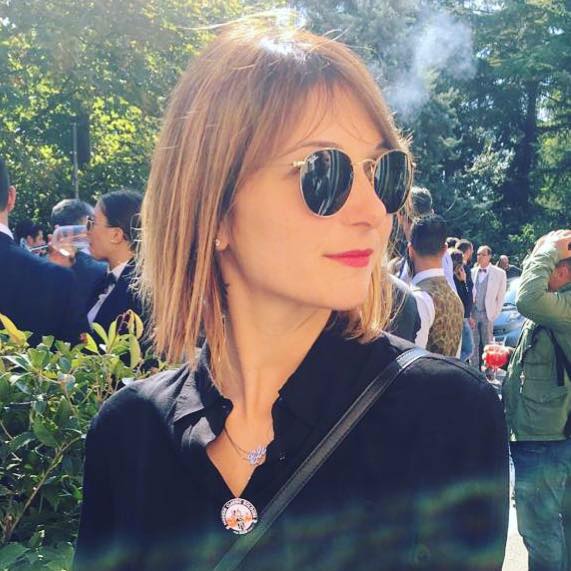
Elisa Mazzini
Social Media Manager for @inEmiliaRomagna and full-time mom.
You may also like
Castles and Thermal Spas near Bologna
by Elisa Mazzini /// October 12, 2020
Rocchetta Mattei, a Moorish jewel among Bologna’s Apennines
by Elisa Mazzini /// November 11, 2019

Interested in our newsletter?
Every first of the month, an email (in Italian) with selected contents and upcoming events.
The most beautiful Parish Churches in Emilia-Romagna
by Davide Marino /// February 28, 2019

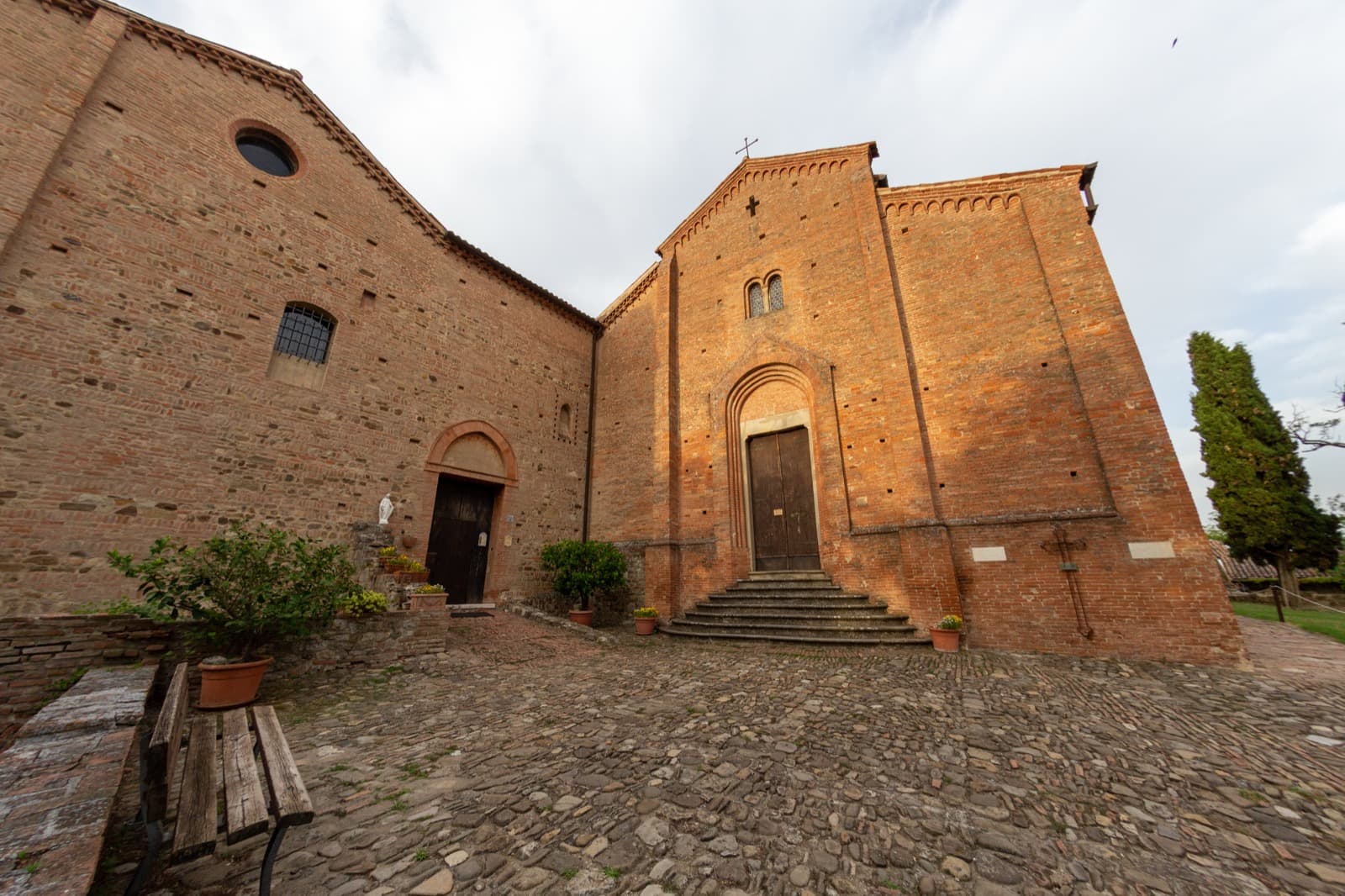
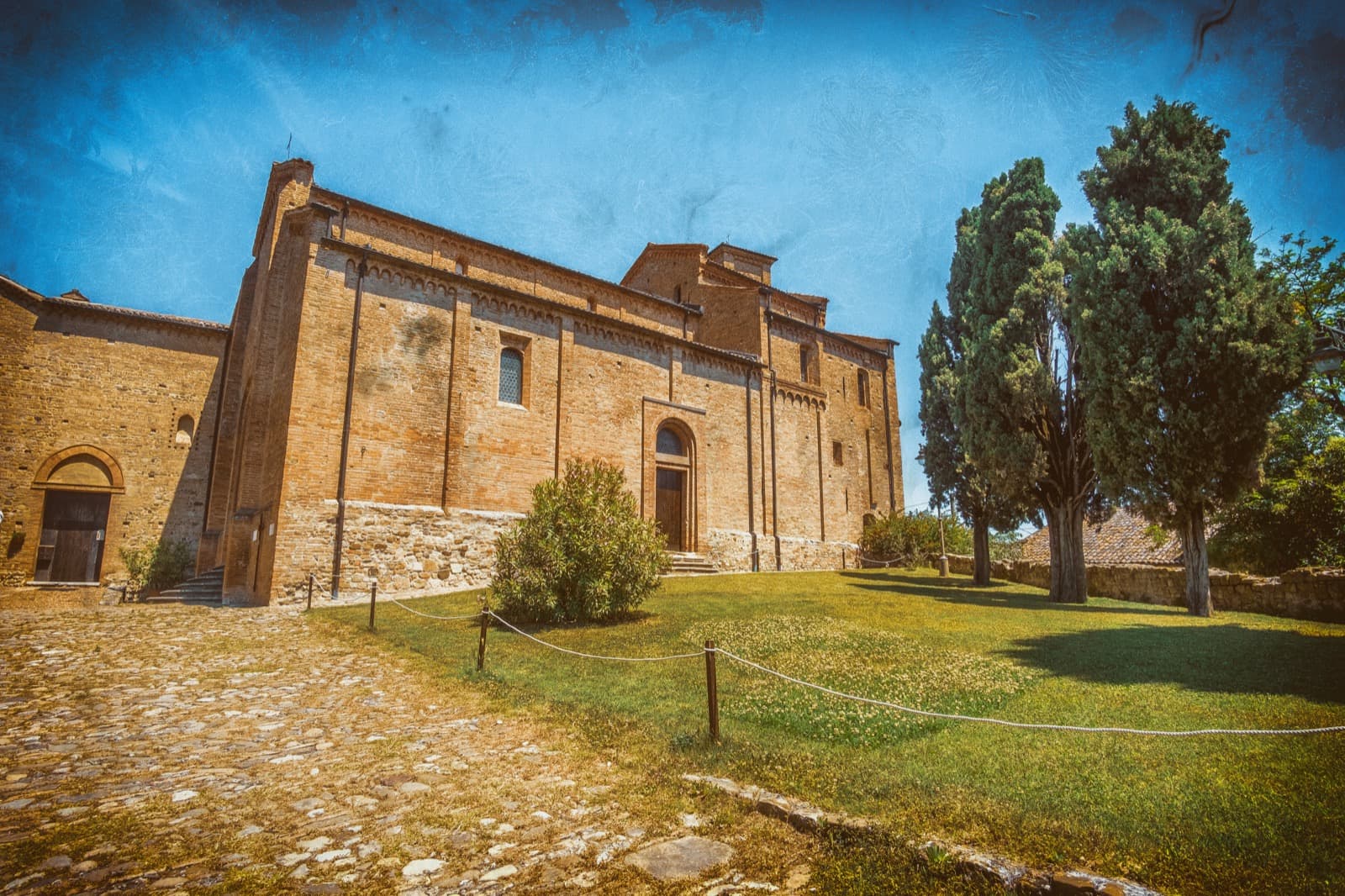
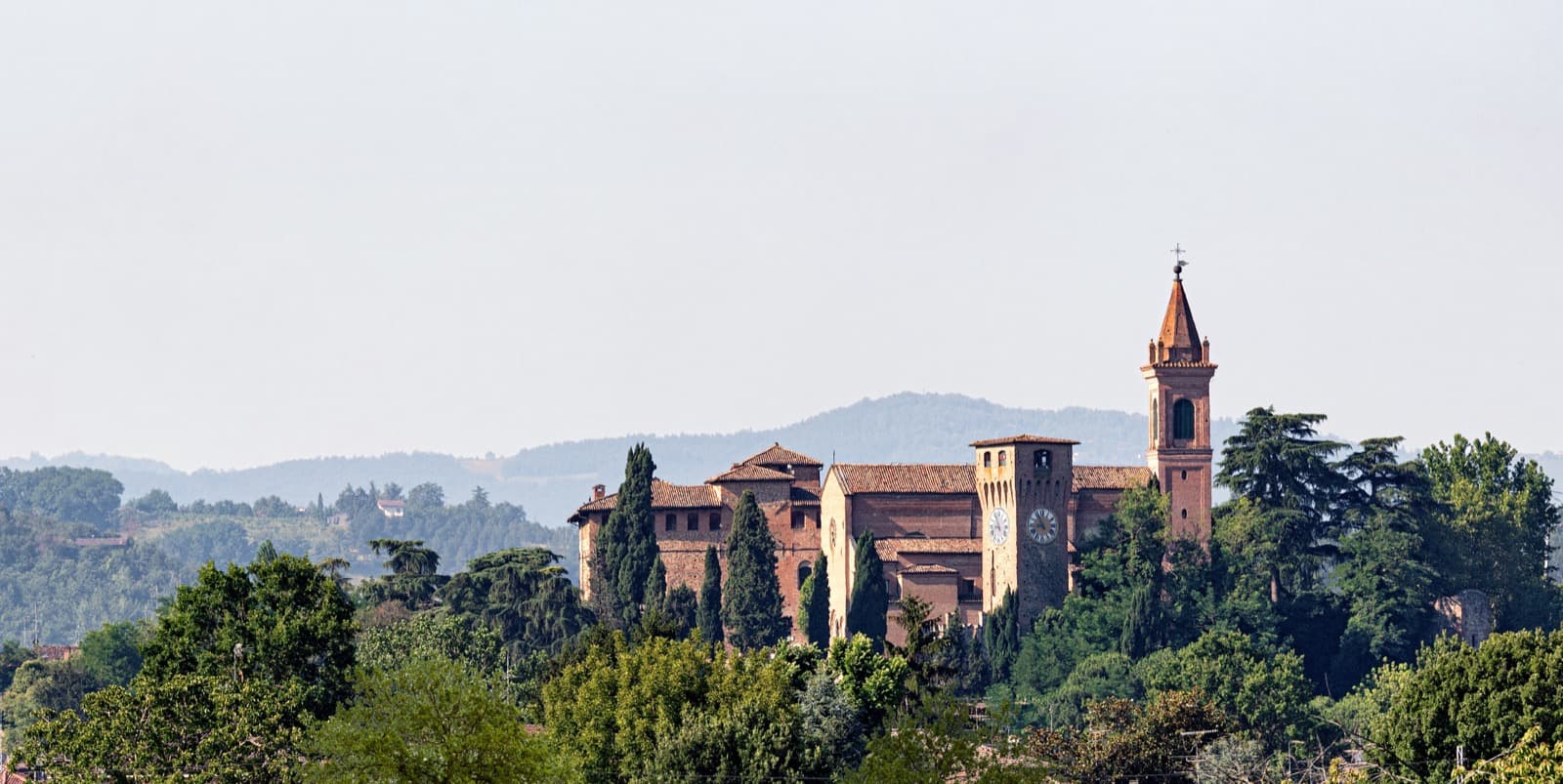
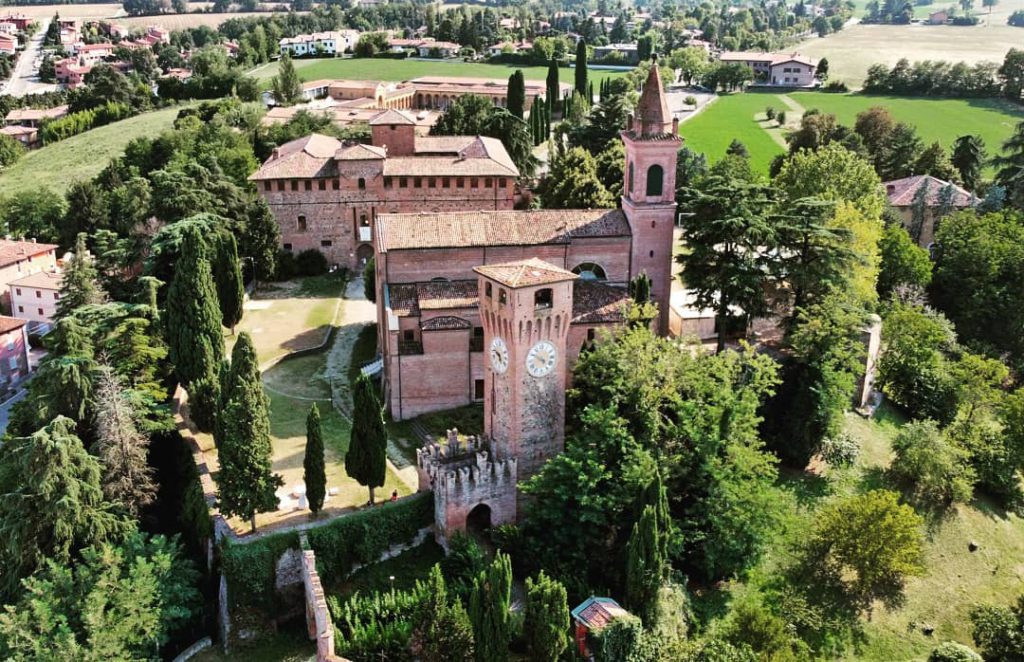
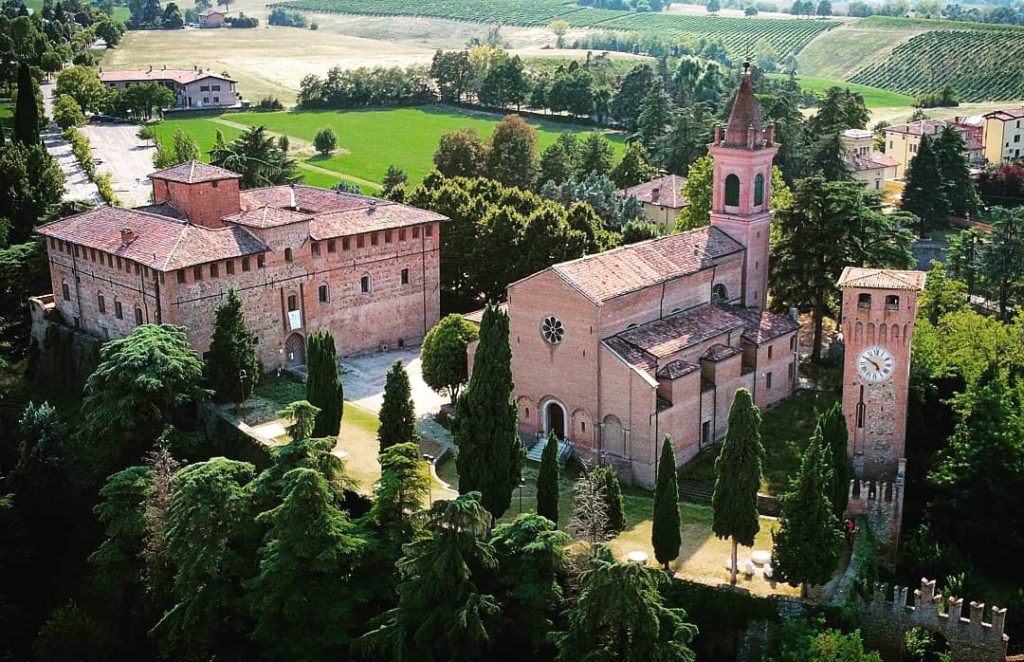
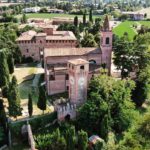
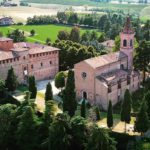
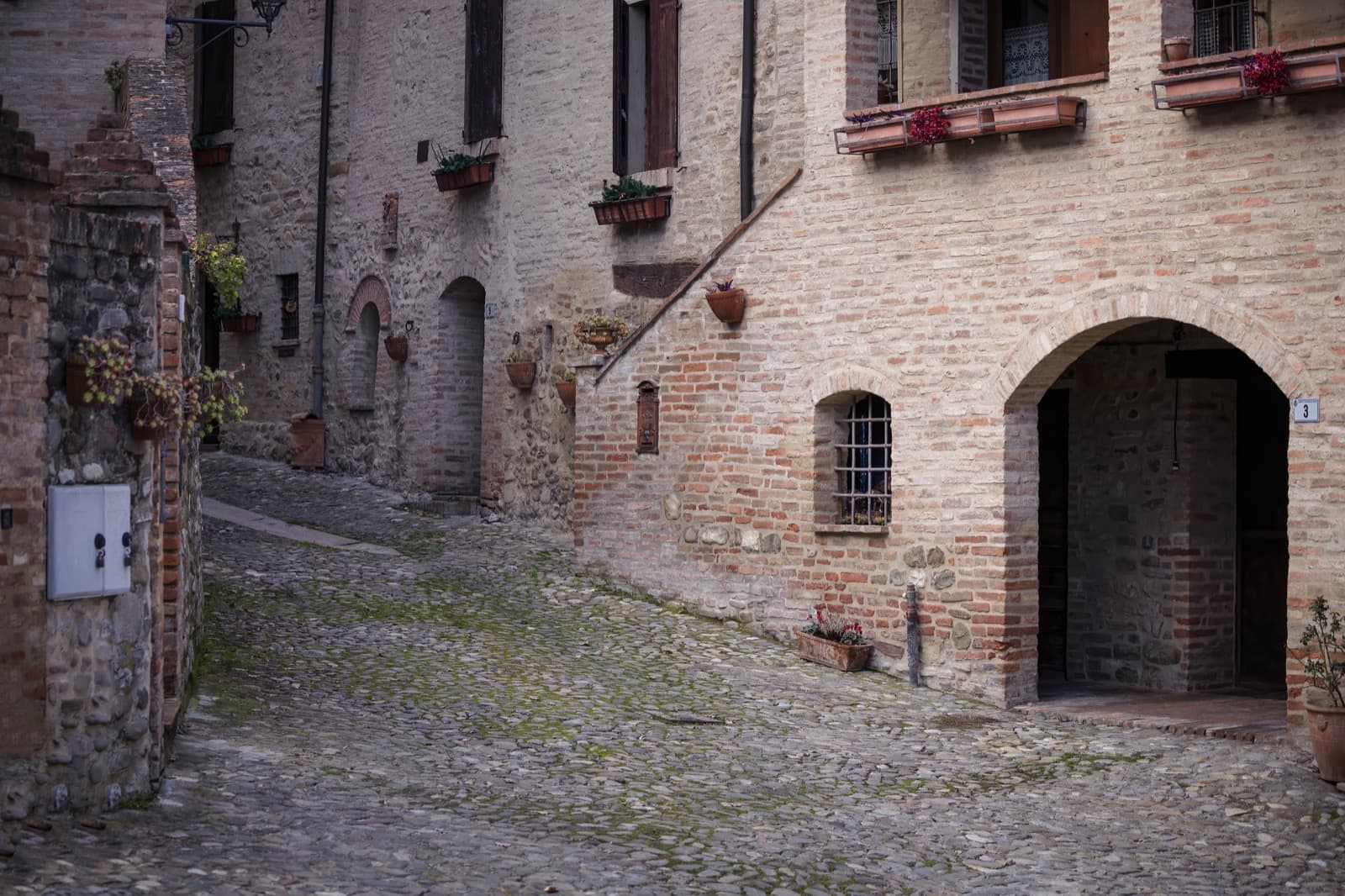
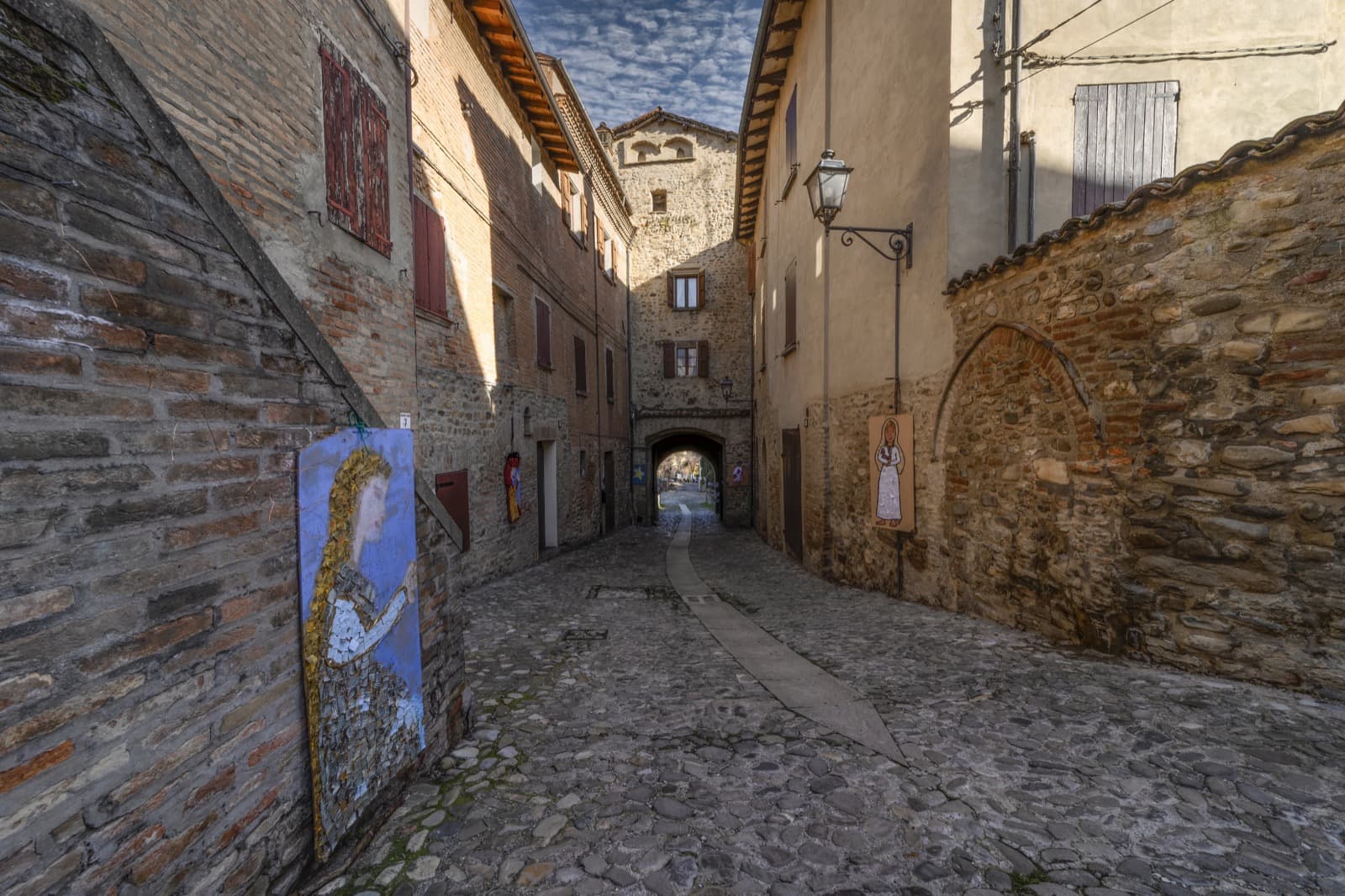
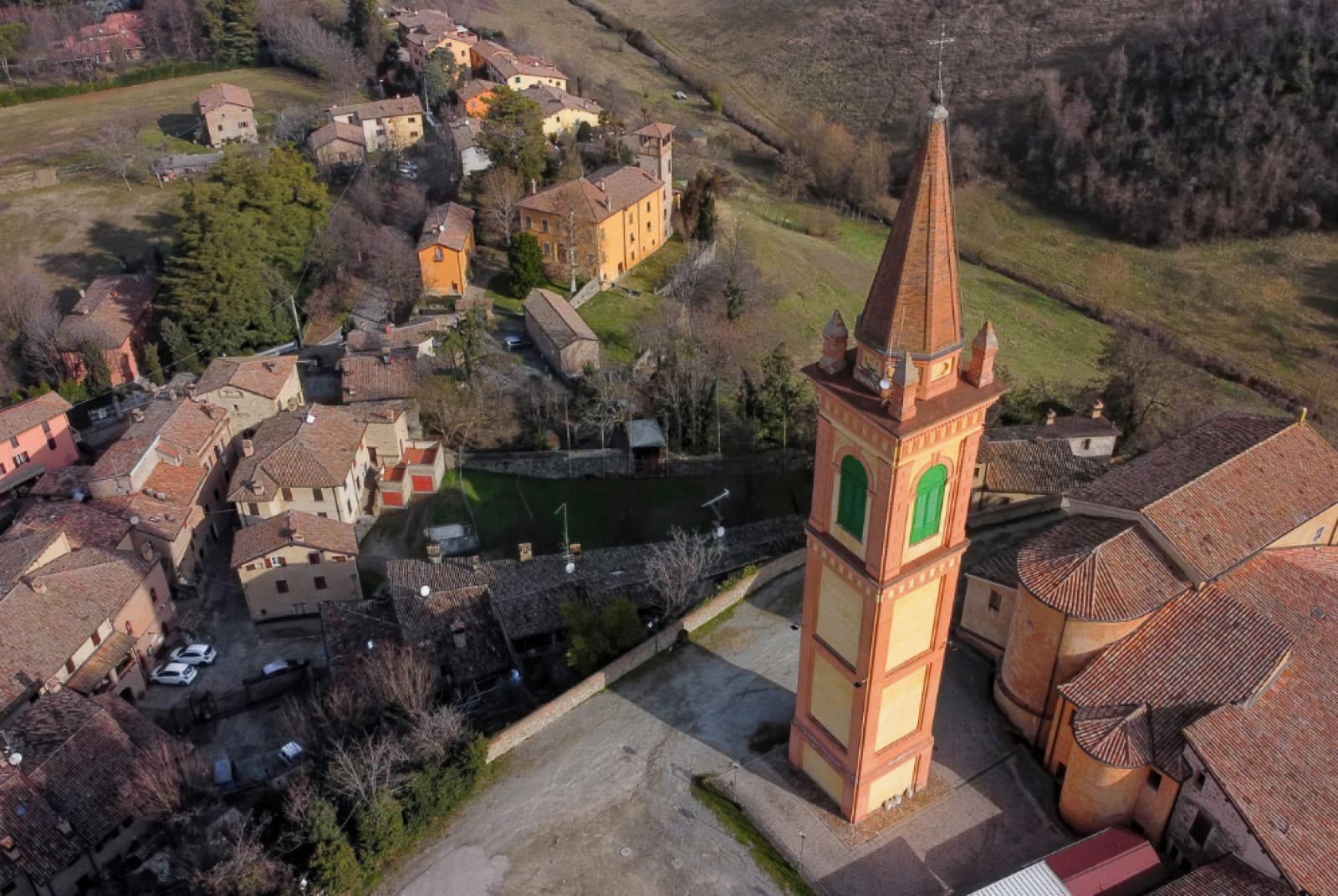
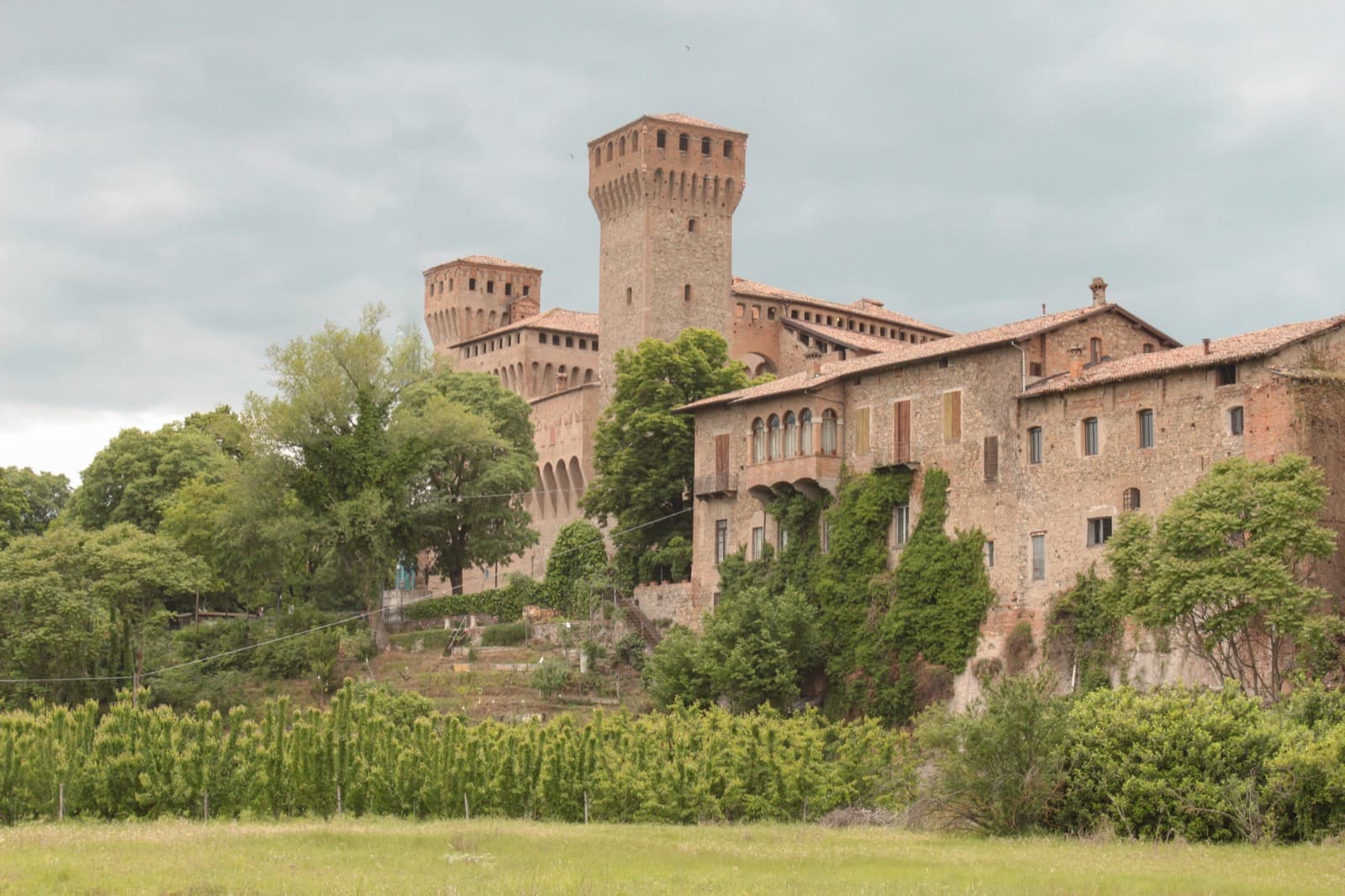
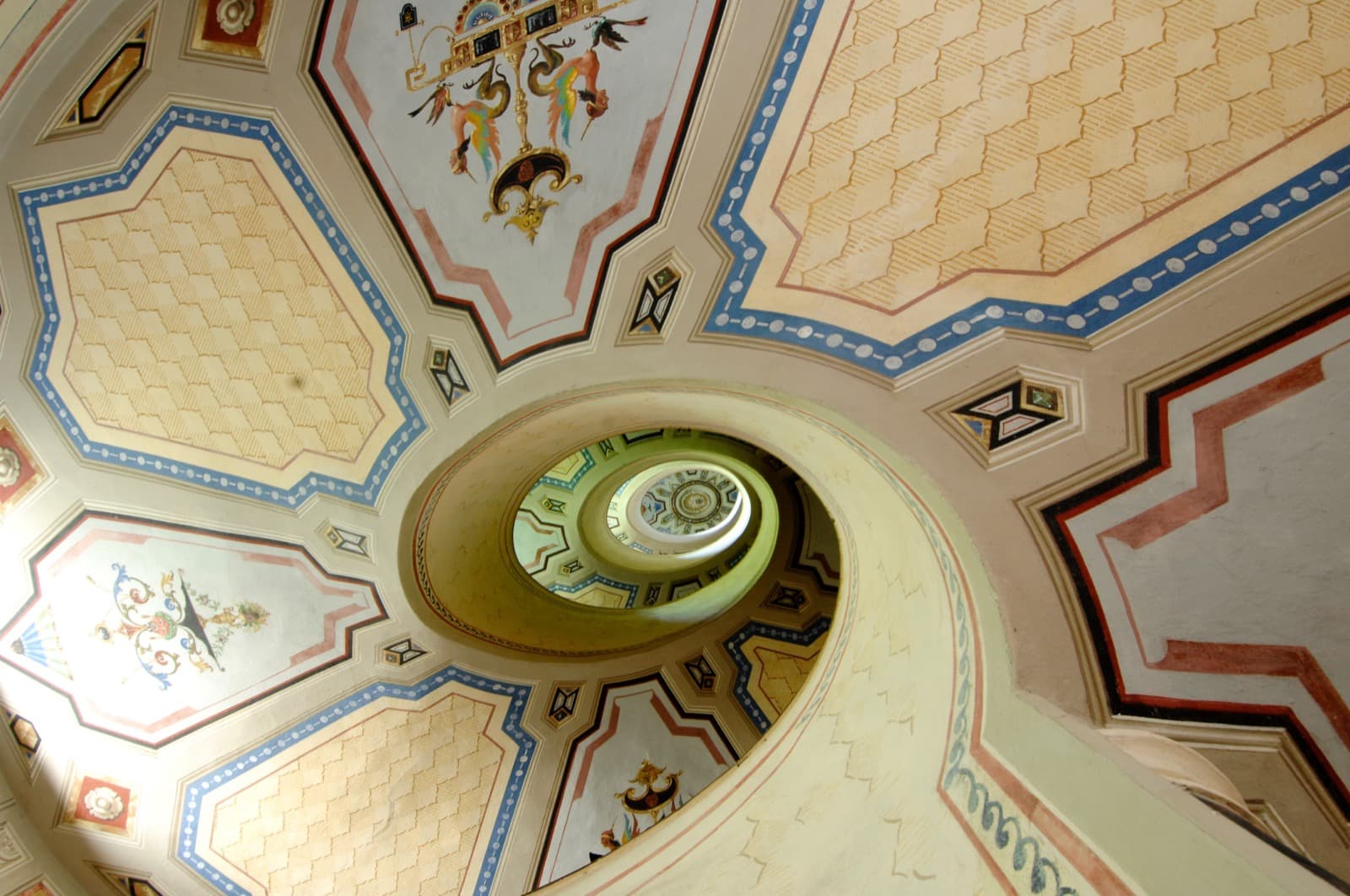
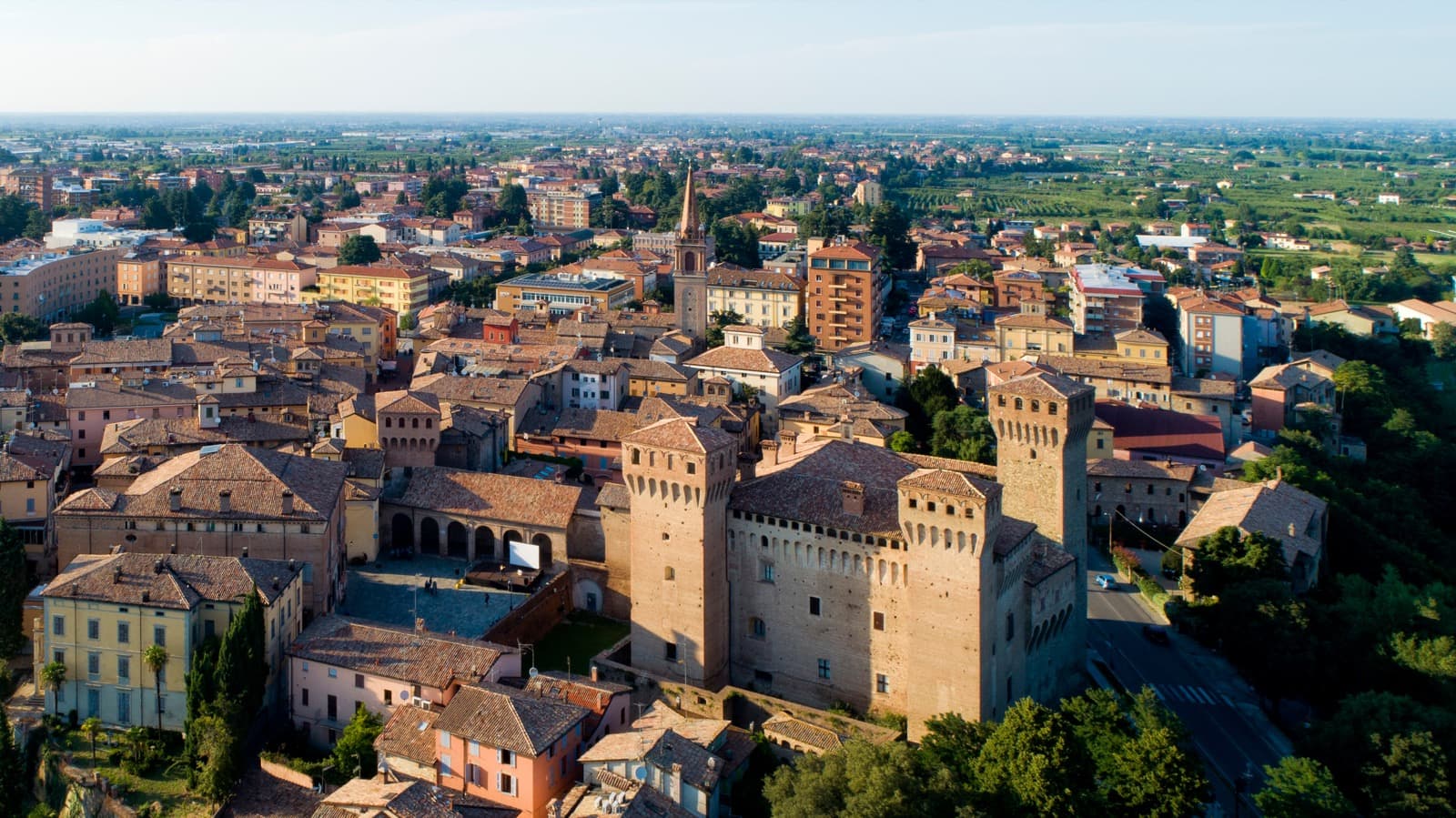
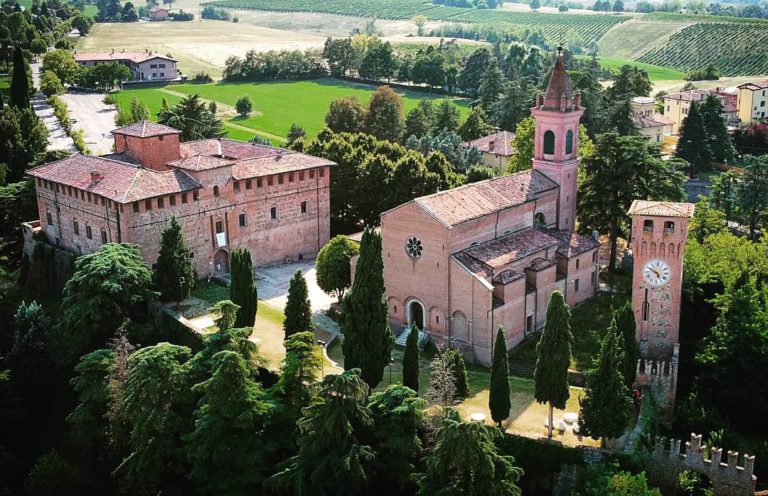
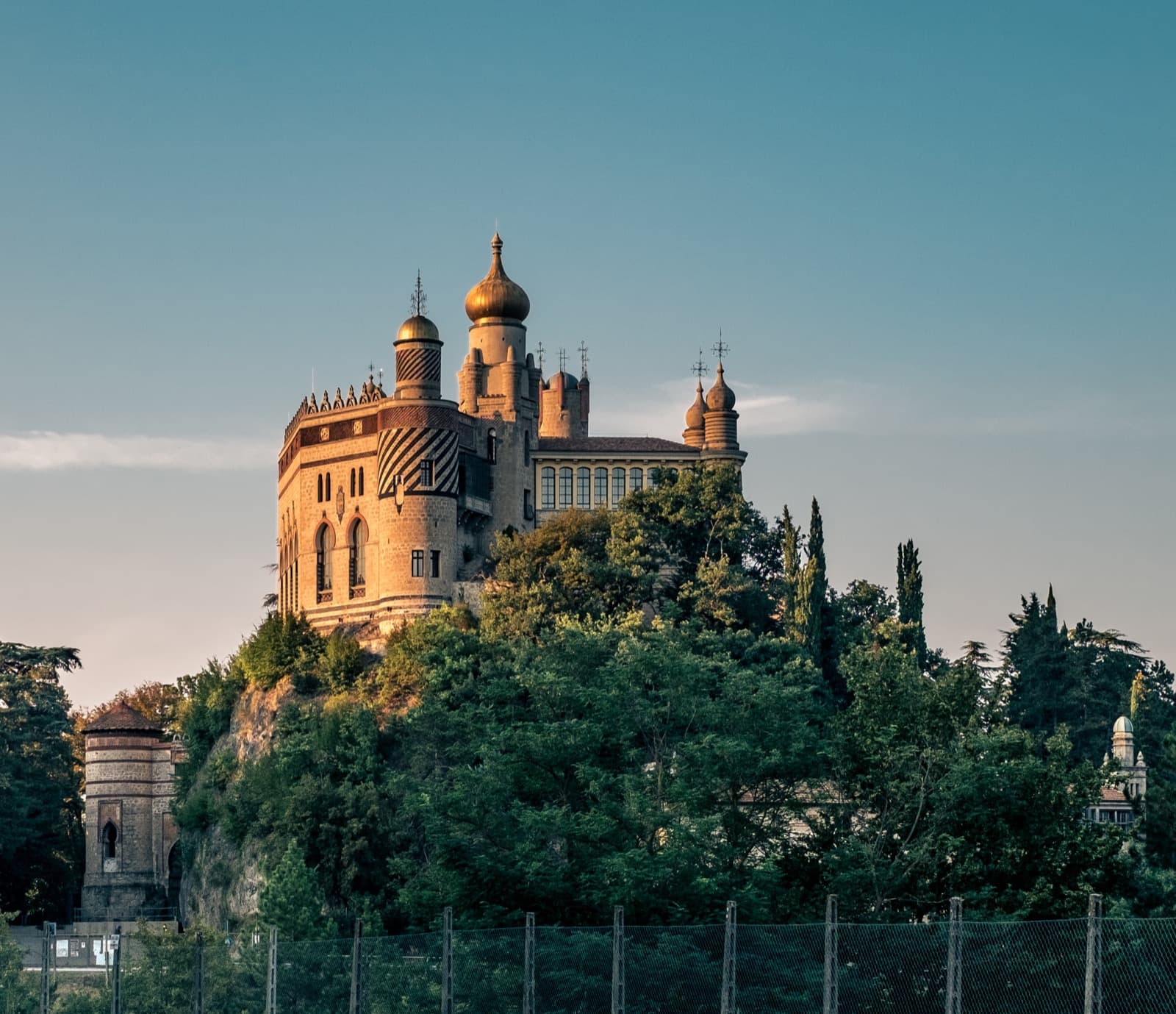
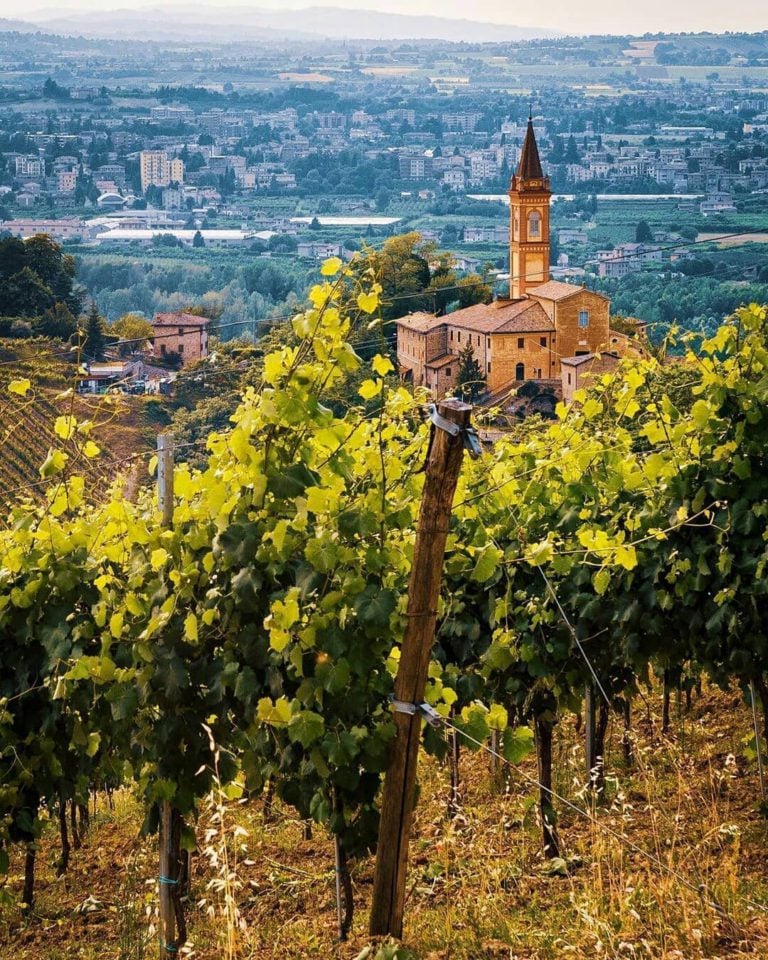
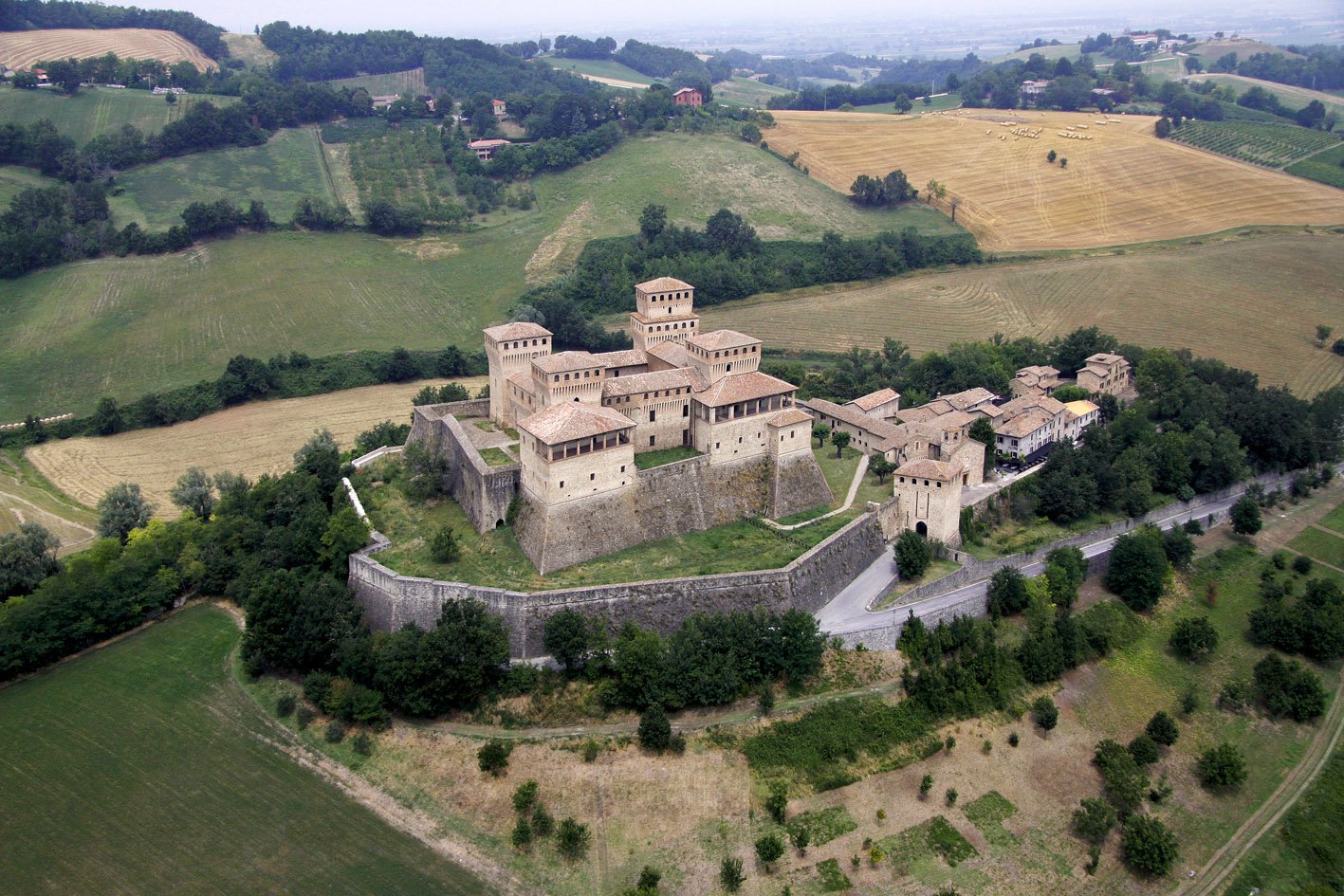
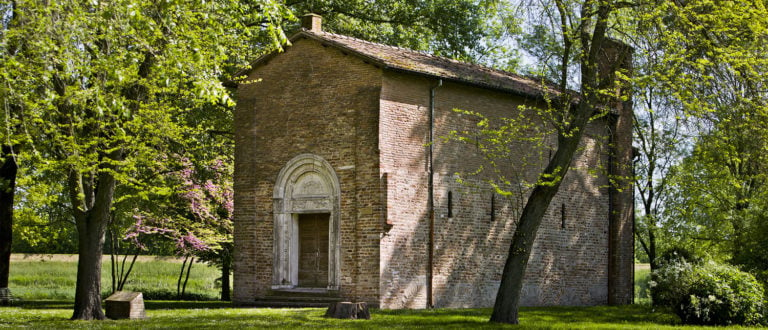
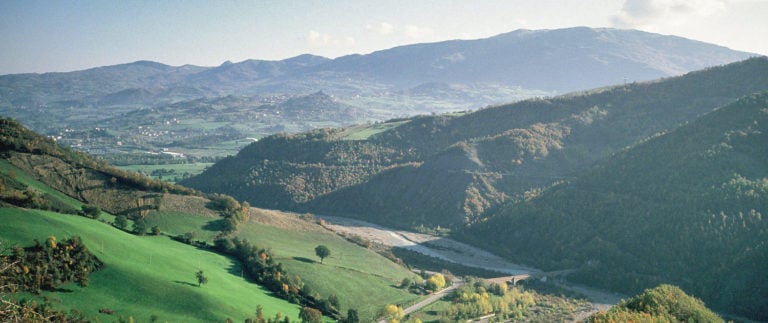
Jacopo
I musei di Savignano sul Panaro risultano chiusi per ristrutturazione! Potete controllare?
Davide Marino
Buongiorno Jacopo,
come giustamente segnali sembra che i musei di Savignano sul Panaro siano al momento chiusi per ristrutturazione: https://www.savignano.it/eventi_e_cultura/musei/
Davide | staff #inEmiliaRomagna